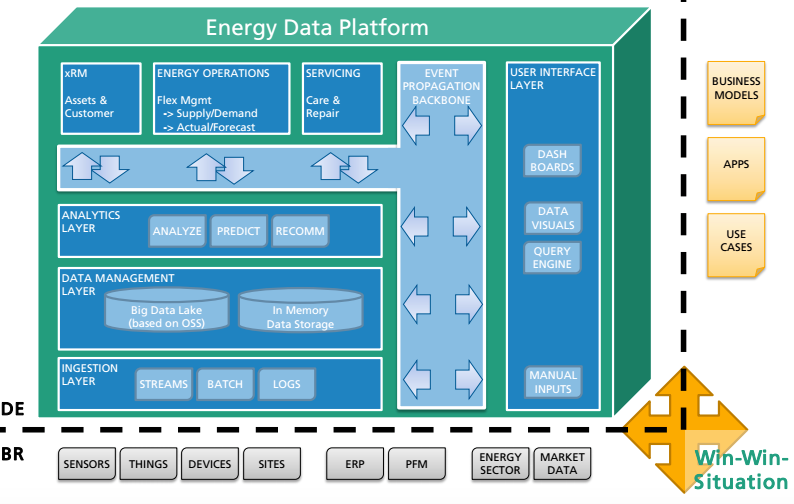The Proposed System
This project proposes a system to manage the energy utilization in all campus of the UFPB, by collection information of the energy consumption in each building, through sensors which measures all relevant electric parameters and transmit this data wireless to a concentrator, which in his turn, group and transmit them to a central station, where data is analysed. The energy analyzers can be viewed as the sensors in BR side of the Energy Data Platform, bottom of Figure 3, the UFPB necessity of energy management as the USE CASE, and the fact of to be a public university the BUSINESS MODEL, right side of Figure 3.

The main system receives the collected data and visually present them through the USER INTERFACE LAYER, and then record these data in order to later obtain the profile of the energy utilization and them analyze it, using the INGESTION, DATA MANAGEMENT and ANALYTICS layers. ENERGY OPERATIONS in the Data Platform allows switching the external power source to a local power source in a specific building, whenever it is feasible.
The architecture of the system can be divided in software and hardware parts. The software part consists in the central management system, and the hardware part is composed from energy measurement equipment, data collection and transmission.